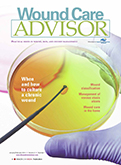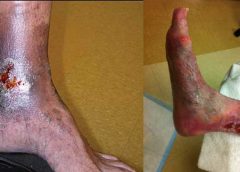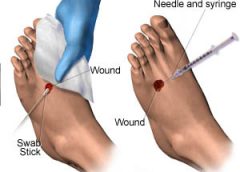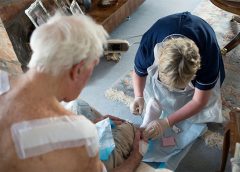By Jeri Lundgren, BSN, RN, PHN, CWS, CWCN
As wound care clinicians, we know that an interdisciplinary, holistic approach to prevention and management of a wound is crucial to positive outcomes, no matter where the patient is being seen. Yet too often when a patient transfers from one care setting to another, the only wound information that’s communicated is the current topical treatment. Most transfer forms only include generic spaces for “any skin concerns” and “treatments,” with no prompts for obtaining additional information. In fact, clinicians in many care settings frequently report they had no idea the patient had a wound until he or she was admitted.
Here’s how you can get the information you need to best care for the patient being transferred. (more…)
Read More



